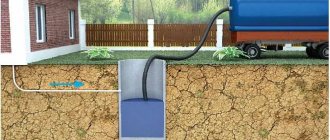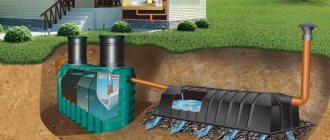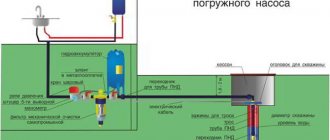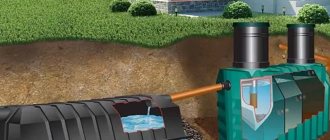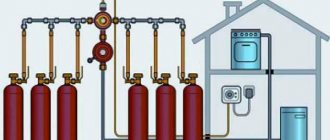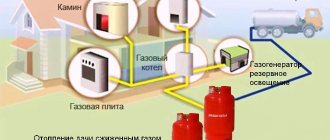How to choose a septic tank for a private household or cottage? This question is asked by many owners of plots, especially those located outside the city. Often, connecting to central sewerage mains is quite problematic due to the remoteness of country or cottage villages. In this article we will tell you how to choose the right septic tank and what you should pay special attention to.
Cesspools, which were previously used to drain sewage, are gradually becoming a thing of the past. More and more people care not only about their own convenience, but also about preserving the environment. Therefore, when drawing up a development plan, waste disposal is also designed at the same time.
Modern equipment is not only completely environmentally safe, but also comfortable to use, as it is absolutely odorless and does not require constant monitoring of operation.
What kind of sewer system should there be for a private home, how to choose a cleaning device? Before considering their varieties, let's give them a definition. So, a septic tank is equipment for accumulating, settling and treating wastewater. It is a sealed vessel that can be placed vertically or horizontally.
You are getting:
- Free shipping
- Installation in 1 day
- 2 year warranty
Order by phone: 8
Telephone
Based on our recommendations, you can easily buy a septic tank for your country house or country house. Especially considering that modern manufacturers offer a fairly wide selection of purifier options.
What to choose for sewerage of a country house?
You can create an autonomous sewer system in several ways:
cesspool
A cesspool, that is, a plank house in the backyard according to an old design. Not the best method, suitable only for a summer house where you spend your weekends.
VOC
Local treatment plant (LOS). If you intend to live in a country house permanently, VOC is exactly what you need. Storage capacity.
Sealed sump
A sealed sump in which wastewater accumulates. To clean the containers, you need to periodically call the vacuum cleaners. This option is suitable for a small family. At the dacha, this toilet option is also quite acceptable, especially if you come only for the weekend.
Sewage does not pollute the soil, but you will have to spend money on sewerage maintenance (calling sewer trucks).
Septic tank
The wastewater is cleaned mechanically and enters a filtration well. Such an autonomous sewage system requires maintenance, but not as often as with storage tanks. And once every 5 years it is necessary to pump out solid fractions.
Methods for sewer cleaning
Even modern local treatment plants require cleaning and technical inspection. Such cleaning is also necessary for septic tank and cesspool systems. The sludge that accumulates not only at the bottom of the tanks, but also in the pipes, after some time turns into a clay-like material, the removal of which will require a special tool. To prevent this from happening, timely implementation of a set of cleaning measures will extend the life of the sewerage system.
Manual cleaning method
This method requires the availability of special tools that will simplify some steps.
Order of conduct:
- Using a drainage and fecal pump, the tank is emptied of wastewater, which is pumped into another container.
- There may be sludge deposits at the bottom of the tank, which can be removed with a shovel.
- The walls of the tank are treated with a jet of water under high pressure. This allows you to finally get rid of deposits.
- Using a drainage and fecal pump, water with residual contaminants is pumped into the same container into which the wastewater was poured. The last step is to dispose of the contents of the container.
It should be remembered that during manual cleaning you must use respiratory protection. This need is associated with the release of harmful fumes during the natural processing of wastewater.
Calling the sewer service
The simplest method is if the owner of the site does not have free time, but has extra funds. The sewage disposal service uses a specially equipped vehicle with a wastewater tank and a powerful vacuum pump. A long hose is lowered to the bottom of the tank and, using a pump, service workers pump out sludge and wastewater. More modern models of this equipment are equipped with a tank washing system, which allows for better and more reliable cleaning.
Maintenance of a complete cleaning station
It can be carried out either independently or by a sewage disposal service. This method requires exactly the same tools as for manual cleaning. In complete treatment stations, waste should only be removed from the aerobic stabilizer.
Basic cleaning operations:
- Pumping out sludge using a drainage and fecal pump from a tank. The hose from the pump should be placed in a separate container in advance.
- Clean the walls and bottom of the tank using high pressure water. You should also pay special attention to washing all pipes and hoses that are inside.
- Pump out the water used for flushing.
- Fill the tank with clean water.
The pumped-out sludge can be used for agricultural purposes; it is an excellent fertilizer for the soil.
How to choose an autonomous sewer system in a private house?
I have listed the main components of an autonomous sewage system. When planning, you must take into account specific conditions:
- Relief.
- Climate.
- Soil features.
- Location of groundwater.
- Number of people living in the house. If we are talking about a house where you are going to live permanently, the load must be calculated according to existing water consumption standards.
- Possibility of access to the house. The vacuum truck must drive directly to the site to pump out the sewage.
- To lay a sewer system in a country house, it is necessary to develop a project.
If you are not a builder, it is better to contact specialists who will take into account the conditions of a specific area, drainage volumes and make calculations according to building codes.
Storage containers
Typically, large-volume polymer containers are used to collect sewage, which are buried underground. A sewer pipeline is connected to them from the house at a slope, through which contaminated liquid is transported.
You can also make a storage tank for a private home yourself from concrete well rings with a lock, placing them on a round slab and covering with a top lid with a hatch. As a result, a sealed concrete well will be obtained, part of the wastewater from which will go into the ground through moisture-absorbing concrete walls.
The storage container is periodically emptied as it is filled, calling a sewer truck for this purpose.
It is rational to use waste collection tanks in summer cottages with periodic presence of people. In this case, the tank will not have to be emptied so often, which is compatible in terms of costs with the installation of more complex and expensive treatment facilities.
Layout and depth of sewerage in a private house
The sewerage system for a private home includes:
- Pipeline inside the house or internal sewerage network.
- External piping to a treatment or collection plant. External sewerage must be laid at a slope for gravity drainage
- Storage or treatment facilities (reservoir, septic tank, filtration fields).
The structure and depth of installation of sewerage in a private house is clearly demonstrated by the diagram below:
Since a cesspool, a local treatment station and a sealed sump are more suitable for the sewage system of a country house, I propose to consider the further structure and operating principle of the sewer system for a private house using the example of a septic tank.
Design standards and calculations
According to SNiP 2.04.03-85 “Sewerage. External networks and structures" septic tanks, filtration fields, wells and infiltrators must be located according to the following rules:
- The sewage disposal structure must be located below the level of the house.
- The distance between the extreme point of the septic tank and the well should be more than 25 m.
- Storage and discharge of wastewater should occur further than 5 m from the house. Cleaning stations with a capacity of more than 8 m3 are located at least 8 meters from a residential building.
- The distance from the septic tank to the border of the site must be at least 1.5 m.
- Sewage wells are laid downstream of groundwater to prevent household waste from getting into drinking water wells.
- It is prohibited to plant plants that will be used for food, trees and shrubs on top of filtration structures. The area is allowed to be landscaped with a lawn or flower beds.
Septic tanks - arguments for and against
I have already talked in detail about how to choose the best septic tank for your home and garden, where I cited real prices and customer reviews. So, after analyzing the information about this type of autonomous sewage system, I came to the conclusion that mechanical wastewater treatment, although it has obvious advantages, is not without its drawbacks.
The undoubted advantages of septic tanks
- Energy independence. A septic tank does not require electricity to operate.
- Does not require maintenance.
- The functionality of the septic tank is not affected by climate and weather conditions.
- During interruptions in the operation of the sewer system, its operation does not deteriorate.
Pros and cons of septic tanks
- Possibility of unpleasant odor.
- Construction requires a fairly large plot of land.
- From time to time you have to call a septic tank to service the septic tank.
- Certain geological conditions are required, in particular low groundwater levels and light soils.
How much waste can you expect?
In accordance with building codes, each person living in a house receives 200 liters of wastewater per day. Based on this, they calculate the volume of the septic tank, which should accommodate wastewater for three days.
If your family consists of five people, you need to install a septic tank with a volume of at least three cubic meters, since the daily volume of wastewater is 1,000 liters.
Bioremediation systems
The high level of groundwater and limited land plots do not allow the use of traditional methods of water purification. In such conditions and to protect the environment, the use of factory-made biological treatment systems is recommended. There are several varieties of such structures on the market that can provide almost complete purification of water from contaminants.
Septic tank with biofilter
Installation of septic tanks with a biofilter. Septic tanks with biofilters are used in private households and organizations. In general, the device consists of a septic compartment and a compartment with a biofilter. In the compartment with the biofilter there is a backfill made of a certain material that is not subject to rotting: expanded clay, polystyrene foam, synthetic fibers. During the operation of the septic tank, a biofilm consisting of numerous colonies of bacteria is formed on the surface of the backfill. Now let’s look at what components make up various septic tanks with biofilters.
1. Membrane with holes; 2. Ventilation; 3. Ring No. 1; 4. Plug; 5. Ring No. 2; 6. Biofilter retainer; 7. LOU housing; 8. Biofilter with loading; 9. Flat filter.
Examples of other septic tanks with a biofilter:
The operating principle of a septic tank with a biofilter. The wastewater flows through the inlet collector into the first compartment of the septic tank, which serves as a sump. Here, solid particles settle and fats separate, followed by their floating. The wall between the compartments is a membrane with many calibrated holes through which conditionally clarified water flows into the second chamber. Here the liquid passes through a coarse filter, where solid particles are removed. For these purposes, special fabric or other materials are used.
The last stage of water purification occurs in a chamber with anaerobic bacteria, which in the process of life destroy organic compounds. After this, the filtrate enters the storage tank and can be used for technical needs. Discharge of water onto the ground or into a drainage ditch is allowed; the level of residual pollution is not sufficient to have a significant impact on the environment.
+ Advantages of a septic tank with a biofilter
- A good degree of water purification is 85 - 95%.
- They do not require frequent maintenance; it is enough to pour preparations containing bacteria into the toilet once a month.
- The system does not require electricity to operate.
- Does not emit unpleasant odors.
- Installation is quite simple and does not take much time.
— Disadvantages of a septic tank with a biofilter
- Prolonged downtime of the system (2-3 weeks) is not allowed, as a result of which the death of bacteria may occur.
- Bacteria do not tolerate bleach and many chemical detergents used in everyday life.
- There is a need to add biological products.
- The cost of the system is more expensive than a conventional septic tank.
In what case should you choose a septic tank with a biofilter? A septic tank with bio-treatment can be used in individual houses that are used for permanent residence. Such structures do not require frequent maintenance and are easy to handle, so the introduction of microorganism cultures can be carried out through the toilet. The main disadvantage is the possible death of anaerobic bacteria during prolonged downtime of the autonomous sewage system. The cycle from the moment of introducing new crops to achieving maximum efficiency reaches 14-15 days.
Deep biological treatment station with forced air supply
Design of a system with forced air supply. To determine how to choose an autonomous sewer system for a private house with a large number of residents, we will consider the capabilities of deep biological treatment stations. Such systems are characterized by high productivity, over 1.5 cubic meters. meters of domestic wastewater per day. The equipment of a septic tank with forced air supply is located in one building, divided into several compartments:
1. Release; 2. Tertiary settling tank; 3. First stage aeration tank; 4. Secondary settling tank; 5. Second stage aeration tank; 6. Settlement-grease trap for collecting silt, sand, fats; 7. Sewage inlet.
An example of another deep biotreatment station:
Deep cleaning system with open hatch.
The process of installing a deep wastewater treatment system.
Examples of water drainage from the station:
Through an absorption well, it is used on soils with good coagulability.
On top of the ditch.
On the terrain, through a distribution well, to use purified water.
Operating principle of a deep biotreatment station. The wastewater enters a settling tank, in which the process of fat separation occurs using a special device and insoluble particles settle to form sludge. Next, the filtrate is mixed with activated sludge, consisting of algae and aerobic microorganisms. To intensify their life processes, the compartment is aerated with outside air, which is pumped by an electric pump. In the last compartment, sludge settles, which is subsequently pumped into the aeration tank for reuse and creating a closed cycle. Water purified to a level of 98-99% is discharged into drainage or used for household needs.
+ Advantages of a deep biotreatment station
- The water undergoes a fairly deep purification, which is 98 - 99% and can be used for technical needs.
- The installations are quite compact.
- They do not emit unpleasant odors.
- Installation is quite simple.
- They can be installed in any area, regardless of the ground level and soil type.
- No consumables in the form of various biological products are required.
- The system is quite durable and designed to last for decades.
— Disadvantages of a deep biotreatment station
- For the system to function, a constant supply of air is required, and therefore a constant supply of electricity to the installation.
- Without air supply, aerobic bacteria begin to die.
- Systems of this type are quite expensive.
- A prolonged absence of wastewater leads to the death of bacteria and microorganisms that make up activated sludge.
- Over time, a significant amount of sludge accumulates and must be removed; this procedure is carried out 2 times a year.
In what case should it be used? The main advantage of a septic tank with forced air supply is its high productivity and degree of water purification. Such equipment has no restrictions on its use, is optimal for houses with a large number of residents and requires virtually no maintenance. Can be installed on any soil, regardless of the level of groundwater.
Construction and scheme of sewerage from a septic tank
Before starting the installation of a septic tank, it follows that the pipes must be at a depth of at least 60 cm, and the distance to the first inspection well must be up to 12 meters (hereinafter - every 15 meters). If there are places on the site with a significant difference in height, intermediate wells are installed. It is advisable to have a well at every turn of the pipe.
The best time to install a septic tank is considered to be summer and autumn, although if the groundwater level is low, work can be carried out at any time.
Models of septic tanks "Eurolos Bio" for a summer residence
Septic tank Eurolos Bio 6
| More details | Users: up to 6 people Salvo discharge: 270 l. Processing volume: 1.3 m3/day Price: 101,500 rub. |
Septic tank Eurolos Bio 3
| More details | Users: up to 3 people Salvo discharge: 150 l. Processing volume: 0.6 m3/day Price: 81,200 rub. |
Basic rules for installing a septic tank
- The pit for installation must be deep enough to accommodate a gravel cushion (20-30 cm), a base for fastening (concrete slab or pouring), the septic tank itself and a covering layer.
- Leave the lid of the septic tank on the surface of the ground so that rainwater does not get inside. For the winter, cover the lid with thermal insulation material.
- Place the septic tank no closer than 6 meters from the house, otherwise the water going into the ground will flood the basement and damage the foundation.
The price for a turnkey installation of an autonomous sewage system from a septic tank in a private house ranges from 50 to 105 thousand rubles. The cost depends on the brand of equipment and the company’s tariff.
Models of septic tanks "TOPAS" for a summer residence
Septic tank Topas 6
| More details | Users: up to 6 people Salvo discharge: 250 l. Processing volume: 1.15 m3/day Price: 131,310 rub. |
Septic tank Topas 8
| More details | Users: up to 8 people Salvo discharge: 440 l. Processing volume: 1.5 m3/day Price: 153,900 rub. |
Sewage pumps in a private house
If it is possible to drain wastewater by gravity through a pipe laid at an angle to the septic tank, an autonomous sewage system will work without additional equipment. However, in some cases a special pump is still required - drainage or fecal. These are different types of pumps, differing in design and purpose.
Types of pumps
- Drainage pumps for sewerage in a private house are used if you need to pump out water from a basement or sump. This pump is suitable for draining water without large solid fragments (from a washing machine or dishwasher).
- The fecal pump is designed for wastewater with solid contaminants. Some models of such pumps have expanded drain channels, others are equipped with grinders. There are pump options for pumping out hot and cold waste.
We will consider the second type of pumps, which are divided into:
- External ones, which are installed above the sewer well, lowering intake hoses into the wastewater.
- Submersible. They work directly in the drain. Horizontal submersible pumps operate at depths of up to 100 m, vertical – up to 7 m.
- Semi-submersible. The pump motor remains on the surface, the pump part is submerged. This modification is not suitable for sewerage - it does not have grinders.
Which pump to choose?
A submersible pump is suitable for a private home. There are several models on sale, differing in price, material, impeller structure, and power.
- The best materials for sewerage are plastic, stainless steel and cast iron.
- Chopper (impeller). Better knives than cutting edges. The best option is a model with a self-cleaning mechanism.
- Power. Choose a pump based on performance criteria, as energy-saving, high-performance models are available. You can save on electricity.
- Pump control. Choose a model without any special bells and whistles.
Prices for fecal pumps for sewerage in a private house range from 7-18,000 thousand rubles. For proper installation, it is better to invite a specialist.
Models of septic tanks "Rostock" for a summer residence
Septic tank ROSTOK Mini
| More details | Users: up to 1-2 people Salvo discharge: 300 l. Processing volume: 0.3 m3/day Price: 30 000 |
Septic tank AK ROSTOK Country Optima
| More details | Users: up to 3-4 people Salvo discharge: 700 l. Processing volume: 0.7 m3/day Price: 85 325 |
Compressor for septic tank
Some septic tanks have a bacterial wastewater treatment system. In the first chamber, anaerobic microorganisms work, from where the waste flows into the second chamber, where aerobic bacteria are involved in the cleaning. So, to provide a sufficient amount of oxygen for the life of aerobic bacteria, a compressor is used.
You can buy a compressor for a septic tank from the popular Hiblow brand for 10-12 thousand rubles.
Septic tank with filtration well
Cleaning devices of this type are easy to use. They are septic tanks with several chambers arranged in series, connected by overflow pipes. From the last compartment in the direction of movement, the clarified liquid enters the well, the bottom of which is filled with coarse sand and crushed stone of the middle fraction.
This pillow functions as a filter for further purification of the drained liquid. In this design, the degree of wastewater treatment is 85-90%.
In addition to multi-section septic tanks, a cleaning system with a filtration well can be represented by sequentially located overflow tanks. The last of them is drainage and equipped with a bottom filter. If, due to the terrain, it is impossible to organize an overflow by gravity, use drainage pumps equipped with automation, which is activated when the upper (lower) level in the tank is reached.
Diagram of a septic tank with a filtration field.
The processing of sediment settled at the bottom is carried out by anaerobic bacteria. Due to the fact that gas is released as a result of fermentation, wells must be equipped with a ventilation system. Periodically, as sludge accumulates, it is removed manually or mechanically. A septic tank with a volume of 5-6 m³ for a family of 4 people should be cleaned once every 1-1.5 years.
If drainage is difficult due to contamination of the bottom gravel filter, the backfill must be replaced. This operation is performed once every 7-10 years.
Sewage pipes in a private house
Septic tanks and VOCs require sewer pipes, the correct installation of which determines the functionality of the system. The basic rules for laying pipes are as follows:
- Pipes begin to be laid from the treatment plant or septic tank to the internal sewer system, that is, to the house.
- To prevent the pipe from freezing, it should be insulated. To do this, you can put foamed polyethylene on the pipe, and an asbestos-cement pipe on top.
- Pipes are connected by couplings or welding.
- Pipes must be laid at a slope to ensure gravity flow of wastewater.
- To avoid blockages, do not bend the pipe and try to lay the pipeline in a straight line.
- If it is impossible to lay pipes without turning, be sure to install a rotary well.
Typically, cast iron (100 mm), PVC or polypropylene pipes (110 mm) are used. The most economical option is pipes and other parts of the pipeline made of PVC. A meter of such a pipe can cost 4,000 or 50,000.
Composition of an autonomous sewer system
The configuration of an autonomous system is a combination of several sections:
- internal sewerage;
- outer part;
- treatment plant.
In turn, internal sewerage includes:
- vertical element - a riser that receives wastewater and moves it to the outer (underground) part;
- horizontal wiring . It is a single or branched network of pipes connected to all plumbing fixtures or kitchen appliances.
The external part of the system consists of an underground horizontal pipe, one side of which is connected to the riser, and the other goes into the receiving tank of the treatment device. The design of a specific sewer system may vary depending on the configuration of the house, the location of plumbing fixtures and other water points, but the overall design of the system does not change.
The main feature of the sewer system is its non-pressure design, in which wastewater moves by gravity. This significantly simplifies installation, but requires laying all elements at an angle. Its value has a certain value, which cannot be changed, otherwise blockages will appear inside the pipes, which will lead to system failure and the need for labor-intensive and expensive cleaning.
You may also like: Sewerage in a private house - do-it-yourself step-by-step installation
Pipes for local sewerage
Pipes are the main part of the sewer system. To install an autonomous sewer system, two types are used:
- gray pipes with a diameter of 50 mm (for horizontal distribution) and 110 mm (for drainage from the toilet and vertical riser);
- red (“red”) - for the external underground part of the system.
kinds
Orange pipes have increased wall strength and resistance to low temperatures, which gives them the ability to work in difficult conditions and withstand soil pressure and other loads.
The main advantage that determines the scope of application is the absence of brittleness when the temperature drops. At the same time, extremes and sudden changes in temperature are contraindicated for these pipes, although such situations do not arise during operation. Even if you pour boiling water down the drain, on the way to the outside of the system it will cool significantly and will not have a destructive effect on the pipeline.
Gray pipes are used for indoor use. They are less able to resist mechanical loads, but are better able to withstand temperature changes. This is important because the inside of the system takes on the brunt of the heat load when hot water is drained or during sudden temperature changes.
In addition, there are other types of sewer pipes;
- white . Used for home (internal) wiring. They are quite rare; due to their attractive appearance, they are used for installation in open areas of the system;
- black . They have a corrugated surface and are made of cross-linked polyethylene. Used for installation in external areas of the system subject to loads with the possibility of displacement or deformation;
- green . Designed for use in outdoor systems. Usually they have continuous perforation for use in storm sewer drainage lines, for draining groundwater from a foundation trench, etc.
The choice of pipes is determined by the structure of the system, its functionality and other specific features. Typically, only gray and orange piping is used.
You may also like: Sewer laying - rules and regulations for laying pipes
Ventilation for autonomous system
The internal volume of the sewer is filled with sewer gases, otherwise called biogas. They have a complex composition, mainly consisting of methane and hydrogen sulfide. The amount of biogas is constantly increasing due to the processes occurring in the organic deposits of the septic tank, storage tank or other sections of the treatment system. If the excess is not removed, the gas will begin to seek an outlet through the internal part of the system.
All plumbing fixtures have a siphon - a device that provides the so-called. water seal This is a bend in a pipe filled with water, preventing gas from escaping.
As the pressure increases, the water seal may be torn off and gas will flow into the living quarters. A disgusting smell appears; in large quantities, biogas is flammable. In addition, it negatively affects a person’s well-being, causing headaches and loss of performance.
To solve the problem, use ventilation outlets from the sewer system. This may be a vent pipe, which is an upward continuation of the vertical riser, extending through the roof to the outside and ensuring the removal of excess gas.
Ventilation outlets from the internal volume of the septic tank can be used. This method allows you to remove gases directly from the container in which they arise. The disadvantage of this option is the need to provide a large height of the pipes, otherwise there will always be a bad smell in the area.
You may also like: Sewer ventilation in a private house - methods, rules and regulations


